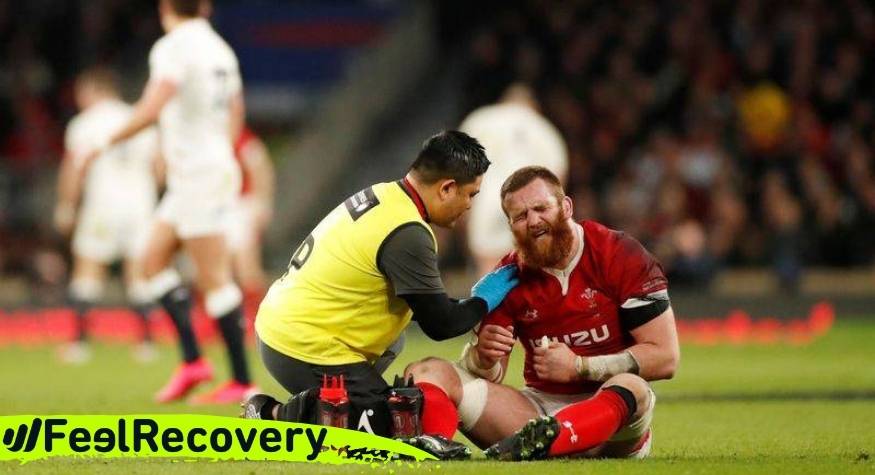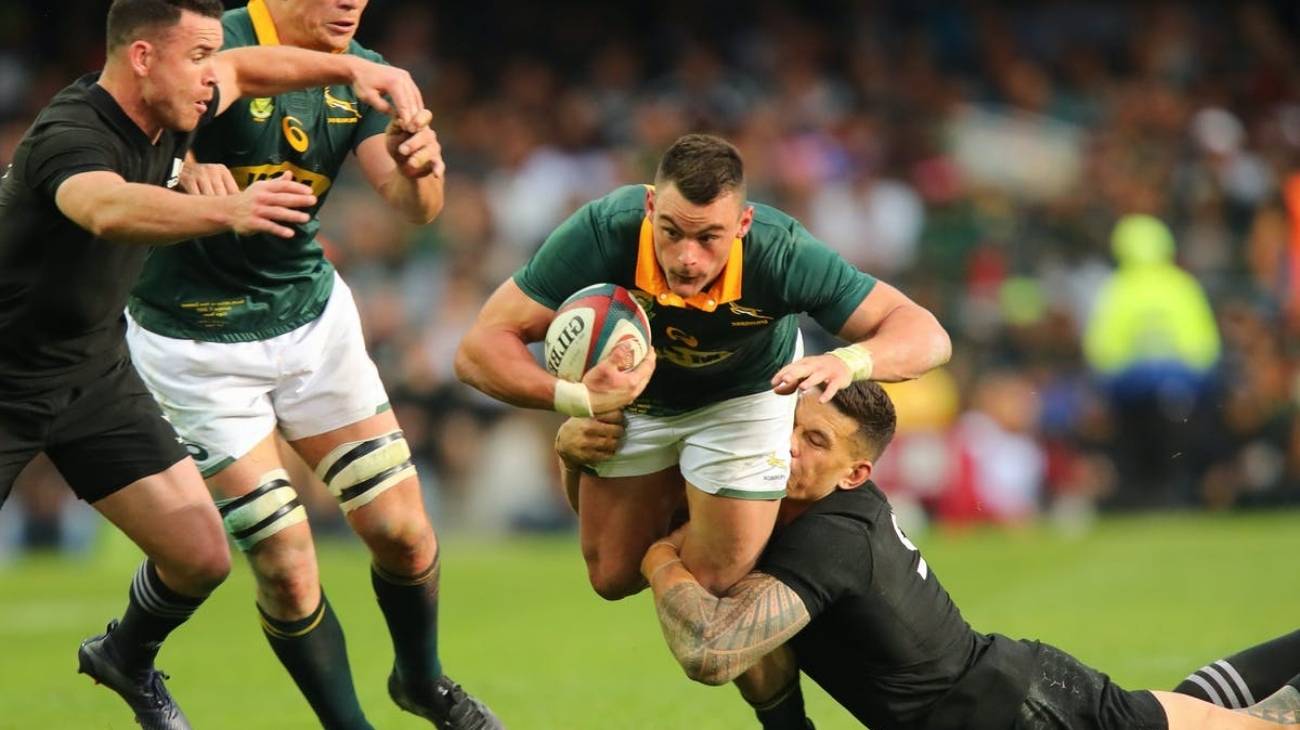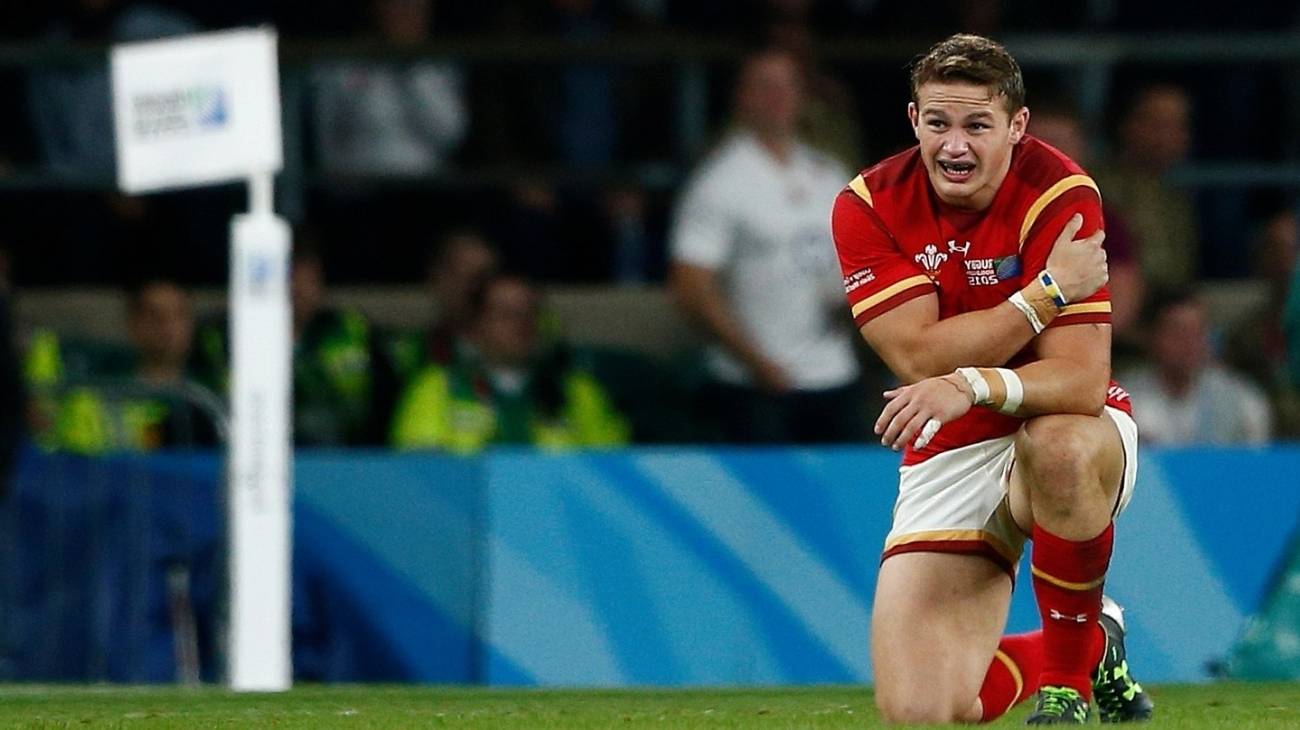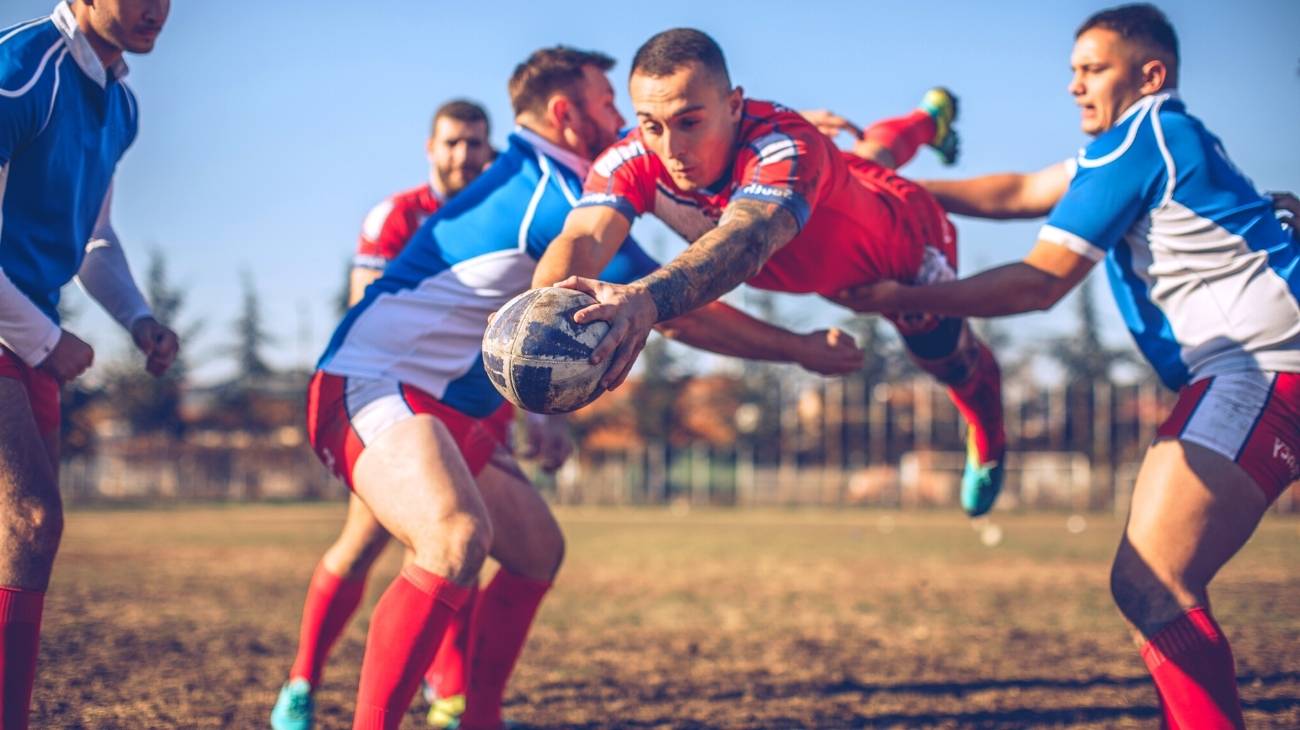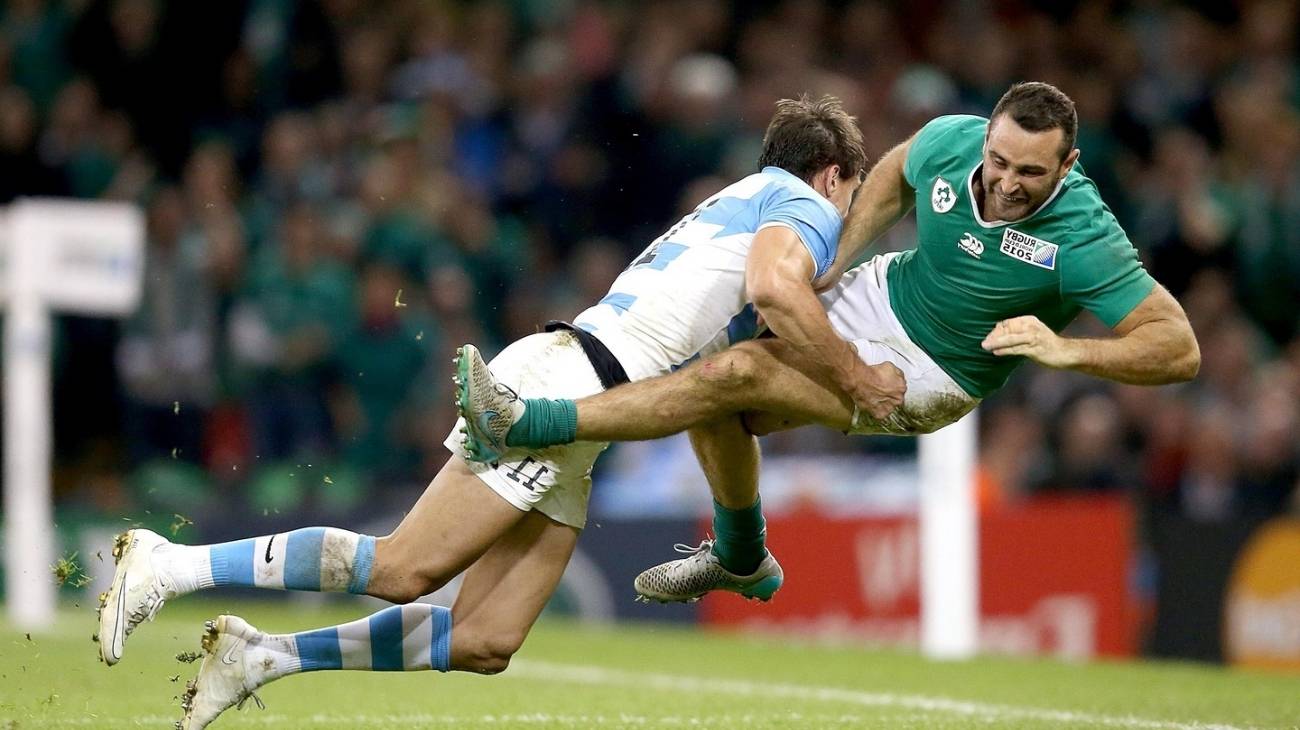The shoulder is the area most frequently injured by rugby players. In order to prevent shoulder injuries in rugby, we bring you this post to talk about each of them. You will find out how often they occur, the risk factors and the mechanisms by which the injury occurs.
In addition, we will talk about the RICE therapy as the main first aid protocol to treat this type of injury. If you want to find out all about it, take a look at the following:
What are the most common types of shoulder injuries when playing rugby?
Before we talk about the most common shoulder injuries when playing rugby, it's important to understand how they are caused. Some studies claim that players in the centre and wing positions have the highest frequency rate of shoulder injuries, as they demand maximum speed in their play. This will depend on each tackle made, with both participants being affected.
Other risk factors include speed, aerobic capacity and amount of training. These generally occur more frequently during a match than in training, especially in the last 20 minutes. This is due to player fatigue and body weight.
Here are the most common types of rugby shoulder injuries:
Shoulder dislocation
Shoulder dislocation most often occurs during a match when a player falls. As a result, the arm is extended backwards during abduction or forced external rotation movements. As a result, the head of the humerus is pulled out of the glenoid joint cavity. Other associated injuries such as the anteroinferior labrum may also occur. Another moment is a direct blow to the elbow, which, due to the force exerted to the posterior shoulder area, could result in dislocation or injury to the posterior labrum.
Acromioclavicular joint sprain
During a rugby match, it is very common for a player to throw himself or fall to the ground. Because of the speed and force exerted, one of the most common injuries is to the acromioclavicular joint. Especially those who play in the 1st and 3rd line of play.
The ligaments surrounding this joint may be torn depending on the severity of the injury. If it is a severe sprain, the coracoclavicular and acromioclavicular ligaments may be torn. The latter, when a fracture of the clavicle occurs. The patient will experience acute local pain and tenderness.
Rotator cuff tear
As a result of a wave of injury it is possible for a rotator cuff tear to develop. It usually occurs in rugby players from repeated overhead movements. Also, when extending the arm backwards during a fall onto the shoulder, receiving a direct blow to the shoulder when or performing a forced external rotation.
The person will experience pain and swelling in the shoulder that may worsen with use of the arm. The severity of this injury may vary and, in the worst cases, require surgery. Although, it is not possible to repair them, it is possible to apply an alternative tendon transfer or replace the joint.
SLAP injuries
SLAP injuries in rugby players are caused by acute trauma from a fall with anterior flexion of the shoulder combined with 15 degrees of abduction. The latter, when the fall with lateral impact of the shoulder, most often occurs during the Try mechanism.
A fall with a direct blow to the shoulder can also cause this type of injury, especially in the player who is tackled. As a result, the rugby player will experience sharp pain, especially when lying on the shoulder, raising and lowering the arm. There will also be a snapping sensation on movement, instability, limitation of movement and loss of strength in the arm.
Shoulder fractures
Shoulder fractures generally occur from a broken or shattered clavicle or epiphysis of the humerus. They usually occur during a fall combined with a direct blow to the shoulder, most often while a player is being tackled. As a result, the rugby player will experience severe pain, bruising and deformity. Following timely and prompt diagnosis, shoulder fractures will progress very well, although this will depend on the severity.
Best products for rugby shoulder injury recovery
Bestseller
-
Microwave Wheat Bag for Neck & Shoulder Pain Relief (Hearts)
£24,95 -
Microwave Wheat Bag for Neck & Shoulder Pain Relief (Oxford)
£24,95 -
Microwave Wheat Bag for Neck & Shoulder Pain Relief (Sport)
£24,95 -
Microwave Wheat Bag for Neck Pain Relief (Hearts)
£20,95 -
Microwave Wheat Bag for Neck Pain Relief (Oxford)
£20,95 -
Microwave Wheat Bag for Neck Pain Relief (Sport)
£20,95 -
Microwaveable Wheat Bag for Pain Relief (Hearts)
£20,95 -
Microwaveable Wheat Bag for Pain Relief (Oxford)
£20,95 -
Microwaveable Wheat Bag for Pain Relief (Sport)
£20,95
How to apply the RICE therapy to treat shoulder injuries in rugby players?
An updated version of the RICE therapy includes Protection as a main phase to ensure faster recovery. However, the best known and most widely applied is the RICE.
Now, we will talk you through each of the phases applied in the PRICE protocol so that you are clear on how to treat shoulder injuries in rugby:
- Protection (P): Protecting the shoulder will prevent the injury from getting worse. Therefore, it is important to suspend any physical activity, and use a shoulder brace or shoulder support to limit the range of motion.
- Rest (R): Combined with protection, rest consists of stopping any physical activity, especially those involving the injured area. This will help speed recovery and prevent the injury from worsening.
- Ice (I): If it is an acute injury, ice is indicated within the first 72 hours as a vasoconstrictor. This prevents pain and excessive swelling. For maximum effectiveness, it is recommended to apply cold gel-filled bags in 5-minute sessions, 1-2 hours apart, for 3 days.
- Compression (C): Compression is done with a compressive bandage, but not too tight. Shoulder supports or orthopaedic shoulder pads will serve this purpose very well. This phase will be very favourable to avoid excessive oedema, increased pain and low blood supply.
- Elevation (E): As the shoulder is the area to be treated, in the PRICE therapy we will omit this phase, as we cannot elevate the shoulder above the heart. In this case, this phase is especially indicated for the upper and lower extremities.
References
- Headey, J., Brooks, J. H., & Kemp, S. P. (2007). The epidemiology of shoulder injuries in English professional rugby union. The American journal of sports medicine, 35(9), 1537-1543. https://journals.sagepub.com/doi/abs/10.1177/0363546507300691
- Helgeson, K., & Stoneman, P. (2014). Shoulder injuries in rugby players: Mechanisms, examination, and rehabilitation. Physical Therapy in Sport, 15(4), 218-227. https://www.sciencedirect.com/science/article/abs/pii/S1466853X14000388
- Horsley, I. G., Fowler, E. M., & Rolf, C. G. (2013). Shoulder injuries in professional rugby: a retrospective analysis. Journal of Orthopaedic surgery and research, 8(1), 1-6. https://josr-online.biomedcentral.com/articles/10.1186/1749-799X-8-9
- de Beer, J., & Bhatia, D. N. (2009). Shoulder injuries in rugby players. International journal of shoulder surgery, 3(1), 1. https://www.ncbi.nlm.nih.gov/pmc/articles/PMC2895295/
- Usman, J., McIntosh, A. S., Quarrie, K., & Targett, S. (2015). Shoulder injuries in elite rugby union football matches: epidemiology and mechanisms. Journal of science and medicine in sport, 18(5), 529-533. https://www.sciencedirect.com/science/article/abs/pii/S1440244014001467
- Kaplan, K. M., Goodwillie, A., Strauss, E. J., & Rosen, J. E. (2008). Rugby injuries. Bulletin of the NYU hospital for joint diseases, 66(2), 86-93. https://www.safetylit.org/citations/index.php?fuseaction=citations.viewdetails&citationIds[]=citjournalarticle_88090_11
- Freitag, A., Kirkwood, G., Scharer, S., Ofori-Asenso, R., & Pollock, A. M. (2015). Systematic review of rugby injuries in children and adolescents under 21 years. British journal of sports medicine, 49(8), 511-519. https://bjsm.bmj.com/content/49/8/511.short
- Bottini, E., Poggi, E. J. T., Luzuriaga, F., & Secin, F. P. (2000). Incidence and nature of the most common rugby injuries sustained in Argentina (1991–1997). British Journal of Sports Medicine, 34(2), 94-97. https://bjsm.bmj.com/content/34/2/94.short
- Gibbs, N. (1994). Common rugby league injuries: recommendations for treatment and preventative measures. Sports Medicine, 18, 438-450. https://link.springer.com/article/10.2165/00007256-199418060-00007
- Carson, J. D., Roberts, M. A., & White, A. L. (1999). The epidemiology of women’s rugby injuries. Clinical Journal of Sport Medicine, 9(2), 75-78. https://journals.lww.com/cjsportsmed/abstract/1999/04000/the_epidemiology_of_women_s_rugby_injuries.6.aspx

